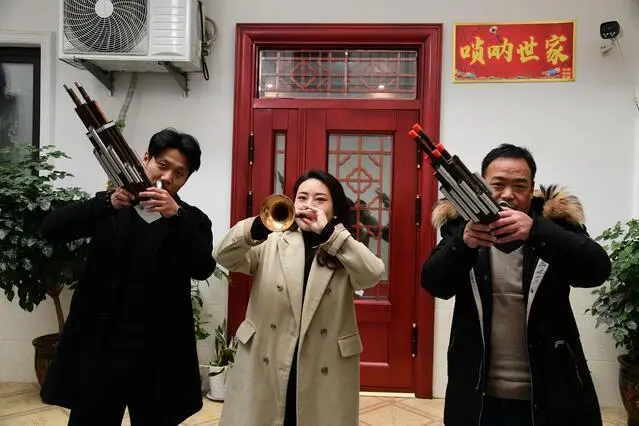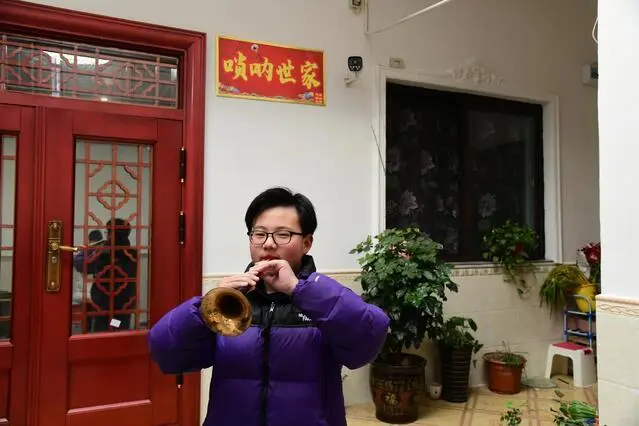The Centennial Inheritance Story of "Chengjiaban" Suona
A suona goes through a hundred years. There is a "Chengjiaban" suona in Longta Street, Yancheng District, which has been handed down for six generations. In 2020, "Chengjiaban" suona was selected into the list of representative intangible cultural heritage projects in Yancheng District. Recently, the reporter interviewed Cheng Fusheng, the fifth generation successor of the "Chengjiaban" suona, and listened to him tell the century-old inheritance story of this folk art.
Suona Suona, with a small melody and a big tune. In the folk, suona is one of the necessary instruments for weddings, funerals, weddings and folk songs, and is deeply loved by the masses.
When the reporter came to Chengfu Shengjia, everyone in the "Chengjia Class" was playing the song "A hundred birds turn to the phoenix", the melody was euphemistic and pleasant, warm and cheerful. Later, Cheng Fusheng played the "fancy suona", showing his teeth at one time, covering his eyes with a glass of wine at the other, holding his fangs at the other, and playing with his nose at the other, which was dazzling. "This suona song should be played cheerfully, brightly and passionately when expressing happy feelings, and it should be played hundreds of turns and thousands of times when expressing sad feelings..." Cheng Fusheng said after a song.

The inheritance of the Cheng family suona can be traced back to Cheng Defang, the ancestor of the Cheng family in the Qing Dynasty. Since then, the Cheng family has become a famous suona family in the surrounding areas with its unique performance skills, which has been passed down from generation to generation for more than 100 years. "Our Cheng family suona not only plays well, but also has unique skills." Cheng Fusheng said, his unique skills are playing fangs and showing teeth flute. Showing the teeth is to show the teeth and blow. When practicing, you should master the pronunciation skills of opening your mouth and blowing the horn. You should not play with a straight face. You should not only show your teeth and laugh, but also pay attention to the breath.

"When I was five or six years old, my family began to teach me to play the suona. I started to learn to play the suona to solve the problem of food and clothing. We will play it for a while when there is a wedding or funeral in the village." Cheng Fusheng was filled with emotion when referring to the past. In order to play the suona well, Cheng Fusheng has suffered a lot - no matter how hot or cold it is in winter, he gets up to practice every day before dawn, and he still perseveres when he is exhausted.

Cheng Fusheng's daughter, Cheng Pan, listened to her father play the suona since childhood, and has a special interest in folk instrumental music. She chose the suona major at school. "Suona is a skill handed down by the Cheng family for several generations, and I want to pass it on. I often think that the old generation plays the suona for a living, and now how can I make it develop better?" Cheng Pan began to think about how to continue to innovate while inheriting the traditional suona skills, and integrate the cultural elements of the new era into the performance of the suona. "The soundtrack of the recently popular film Man Jianghong has given me a lot of inspiration, and let me find that some traditional instruments can be so popular after they are integrated into modern music elements." Cheng Pan said that she tried to let the suona perform "Tuyang combination", adding electronic piano, guitar and other instruments when playing some traditional songs, as well as many popular music elements, so that the suona performance can be more attractive and more integrated into modern life, Let more young people know, accept and love suona.
 渝公网安备 50010702504639号
渝公网安备 50010702504639号